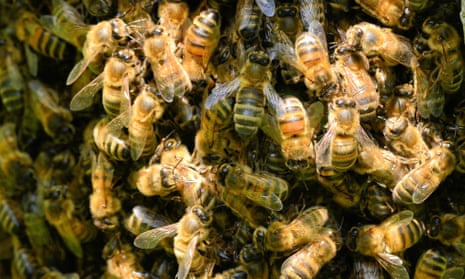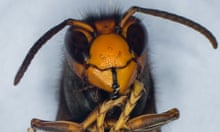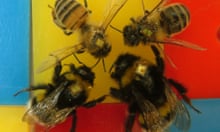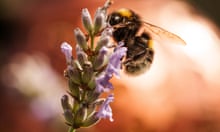Humans are not the only ones in Berlin struggling to find accommodation. A beekeeping boom has led to swarms of bees forming novel new hives using anything from motorbikes to balconies in the German capital.
Germany’s beekeeping association has been forced to dispatch a growing band of swarm-catchers – or schwarmfänger – reachable via telephone hotlines, to deal with a deluge of incidents in which thousands of bees cluster round objects while scout bees go in search of suitable homes, such as a tree hollow, more often than not in vain.
“Many people are concerned about climate change and the dying bee populations and want to do something about it, which is great,” said Benedikt Polaczek, the chair of the Berlin Beekeepers’ Association. But he cautioned that the rise in the city’s bee population meant there was now a lack of adequate habitats and food.
He said: “We now have around 10,000 bee colonies in Berlin alone.”
Nationwide the German Beekeepers’ Association has grown by a quarter in the past six years from 92,000 members in 2013 to more than 120,000 today.
The number of Berlin beekeeping enthusiasts has increased, while offices and hotels are among those putting beehives on their rooftops, and beekeeper courses are oversubscribed. But the accusation levelled at often inexperienced hobbyists is that they do not always understand how to care for the bees.
The Berlin association now has over 50 schwarmfänger volunteers who offer a round-the-clock service to capture the several thousand bees in each swarm that are typically found enveloping everything from car roofs and bicycle frames to traffic lights and balconies.
Jonas Hörning, a bee-loving volunteer who has already saved 100 swarms, said the number of incidents had increased as the number of beekeepers soared.
He said: “The bees like to congregate in house entry ways or in other cavities. Balconies and window sills are also a favourite place.”
Swarm catchers are typically equipped with a breathable box, a sheet or tarpaulin, a bee brush and lemongrass oil to lure the bees into the box. Protective clothing is recommended for all but the most experienced schwarmfänger.
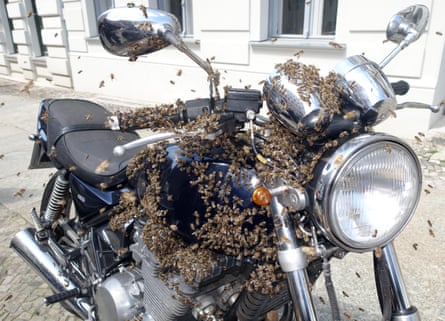
Hörning said: “The trick is to catch the majority of the colony together with the queen, and then the rest of the bees will usually follow.”
The method involves moving the cluster into the box while ensuring the queen, usually in the centre, is among them. If the swarm is on a tree branch it could be cut and put into the box with the bees on it, if the swarm is on an object – such as a bicycle or a lamppost – it could be sprayed with a mist of sugar water and then brushed gently into the box.
Colonies that are not caught will usually die, so there is a sense of urgency about the task.
The news magazine Spiegel recently reported that swarm catchers across Germany were in constant demand this year. It is not usually difficult to find new homes for captured bees because of a swarm exchange website where experienced or would-be beekeepers can register their interest in taking over a rescued swarm.
Polaczek said it was possible to prevent colonies from swarming, by removing all the queen-bee swarm cells. He said: “Some people think they’ve managed it, but if you’ve overlooked just one swarm cell the bees will swarm anyway.”
The swarming season – usually late spring to early summer – is now over for this year. But concerns about the welfare of the bees are more acute than ever. Polaczek said: “There are so many bees they often can’t get enough food.” Some beekeepers are forced to feed their bees with sugar syrup to enable them to get through the winter.
Ideally beekeepers should spend five years in training, according to the association, although very few do. The organisation is critical of the fact that beekeeper starter kits are easily available online encouraging too many people to set up hives on a whim.
